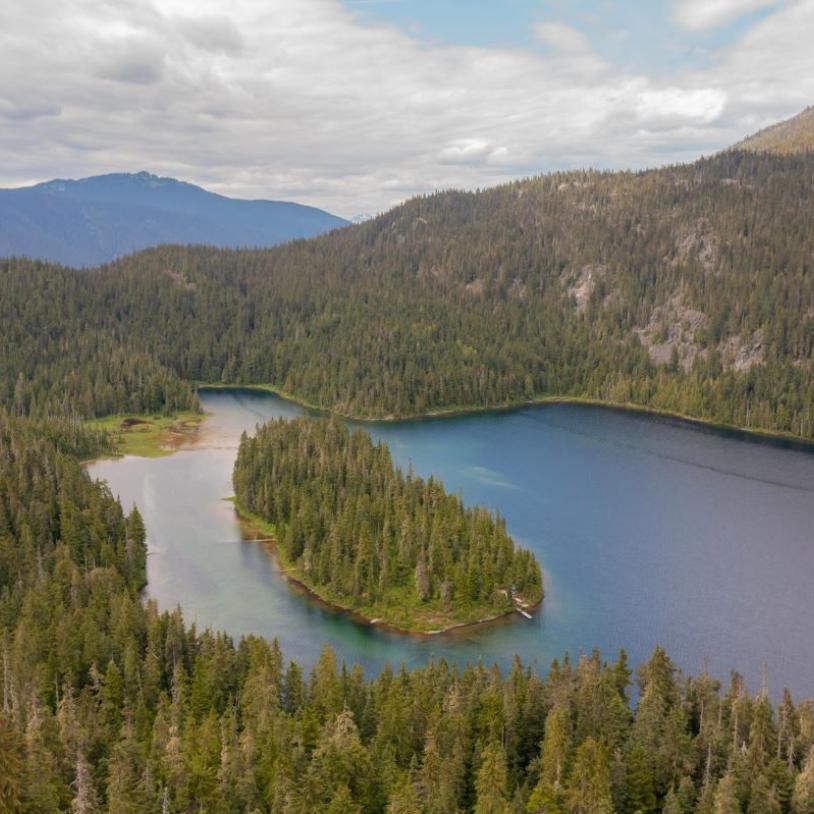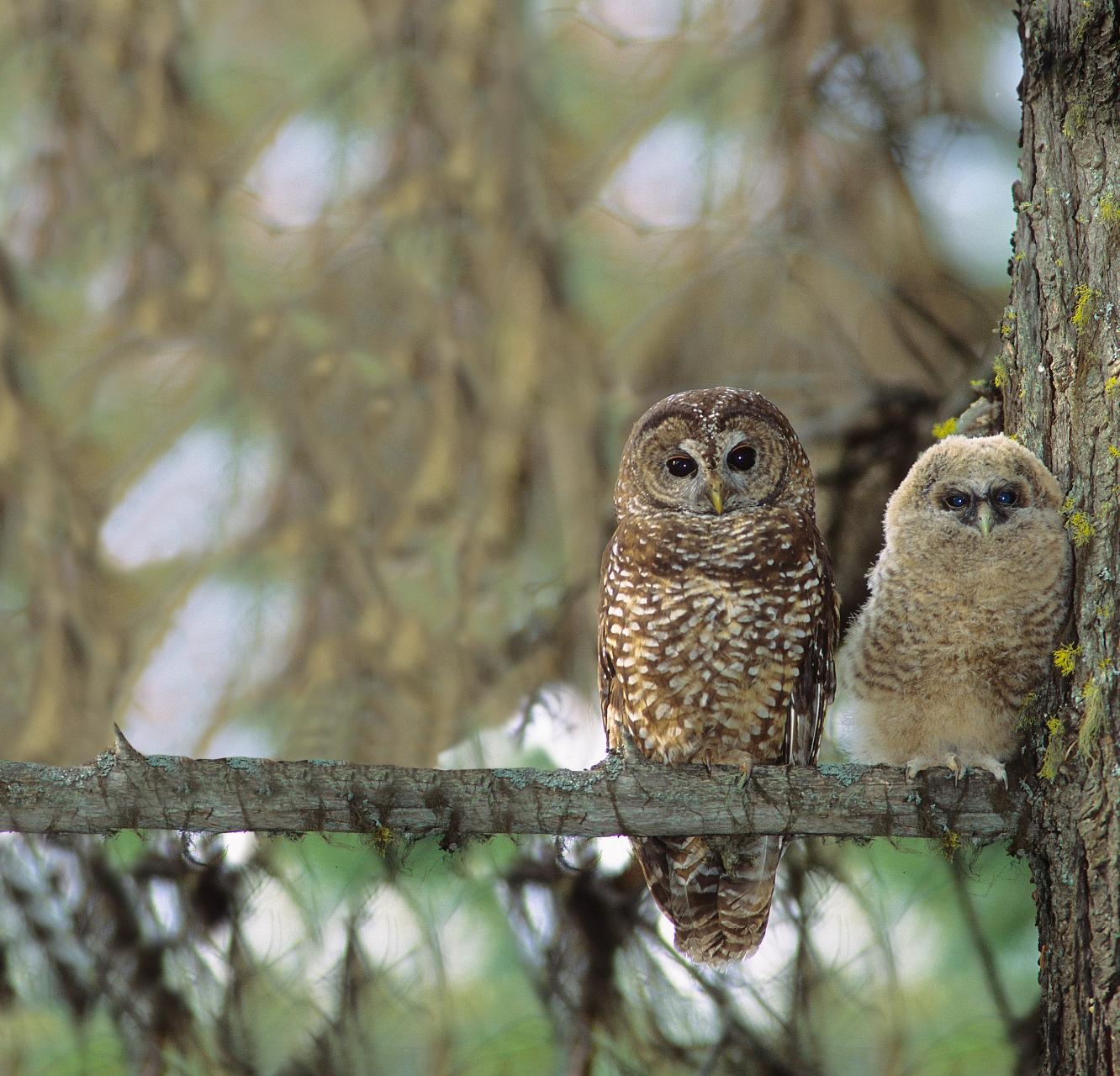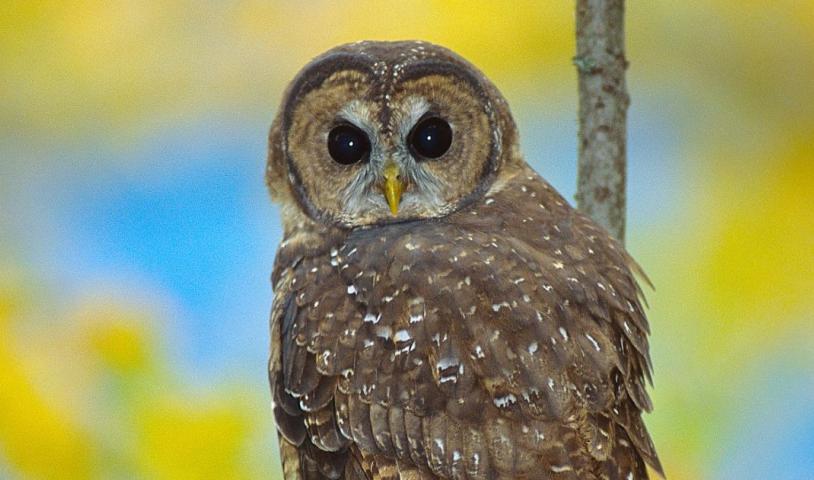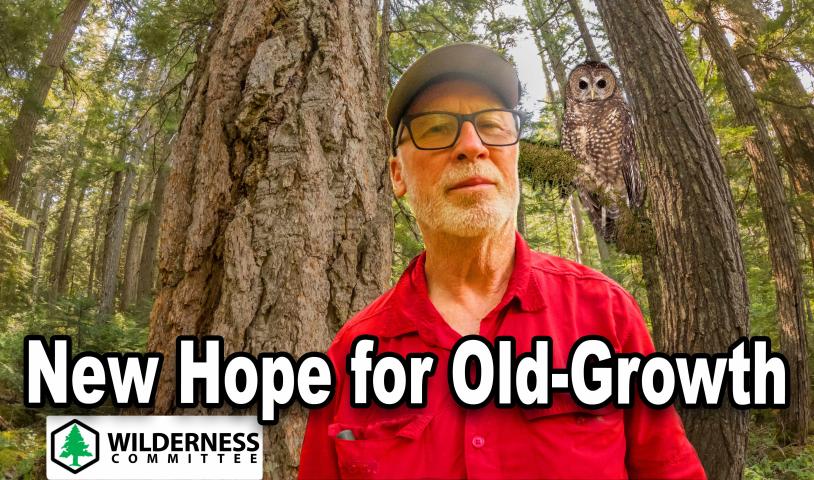Anti‑owl logging plan in USA highlights need for stronger protection measures in B.C.
Thursday, October 25, 2007
For immediate release—October 26, 2007
Canadian environmental group concerned about US Government Attempt to Remove Protection for Endangered Spotted Owl
Anti-Owl Logging Plan in USA Highlights Need for Stronger Protection Measures In British Columbia
Vancouver, British Columbia – The Vancouver, BC-based Wilderness Committee has expressed extreme concern after a change of direction by the largest United States government land holder, the Bureau of Land Management (BLM) in the Pacific Northwest. The BLM seeks to exempt themselves from responsibility to care for numerous endangered northern spotted owls and their old-growth forest habitat in order to make way for increased logging. The BLM has proposed a three-fold increase in logging in spotted owl habitat.
“This could be the death knell for this highly endangered species in the US,” said Andy Miller, staff scientist with the Wilderness Committee. The BLM is the single largest landholder in the US, with over 258 million acres, an area nearly equal in size to Vancouver Island.
The BLM disagrees with a US Federal Law, the Endangered Species Act (ESA), which is designed to safeguard endangered plants and animals. As a result of that law, a plan was implemented in 1994 that gave some protection to 22.1 million acres of spotted owl habitat in Washington, Oregon and California. The BLM controls 2.7 million acres of that spotted owl habitat.
The BLM-controlled forests in spotted owl habitat are big treed lands located close to many Pacific Northwest communities, and they contain some of the best tracts of remaining old-growth forest in the world. The BLM is trying to influence public opinion in local communities by blaming owl habitat protection for school and library closures. Historic legislation ties funding for schools, libraries and community centres to high levels of clearcut logging. The more clearcutting, the more money is received by counties to run public services.
If the BLM wins over public opinion, and succeeds in backing out of protecting spotted owl habitat, 6 million acres within its range would be affected. As a result, the habitat protected for the owl in the US would be reduced by 10%. But the effect on the spotted owl could be even greater because of the geography of western BLM land, strategically located between coastal lands and national forest lands high in the mountains. Not only would some of the best spotted owl habitat be clearcut, but the continuity of habitat between the coast, interior plains, and high mountains could be lost. “In some areas of Oregon, this BLM action could lead to coastal owl populations being isolated from mountain populations with a concomitant long term reduction in genetic diversity and a more rapid decline in owl numbers,” said Miller.
The BLMs actions risk the collapse of the complex multi-jurisdictional plans for endangered species recovery throughout the US. It could precipitate a race to the bottom with region after region, jurisdiction after jurisdiction and landholder after landholder opting out of their long-standing responsibilities to manage endangered species throughout the United States and beyond.
If British Columbia follows suit by opting out of their responsibilities to manage endangered species under the Canadian Species At Risk Act (SARA), then the recovery of the spotted owl, and of other endangered species throughout North America could be in jeopardy. “We know that the BC government has been discussing opting out of caring for numerous endangered species, including the spotted owl, for years,” said Miller, “but now if BC opts out, thinking that the Americans will cover for them, they are sadly mistaken.”
Spotted owls are currently declining by about 5% annually, on average, throughout their US range. Canadian owls are declining by 8-10% annually. One hundred and ?fty years ago, over 1,000 spotted owls lived in the old-growth forests of southwestern British Columbia; today less than 20 remain. The biggest threat to spotted owls in both countries is habitat fragmentation caused by commercial logging.
-30-
For further information, contact Andy Miller @ 604-683-8220 or 604-992-3099





